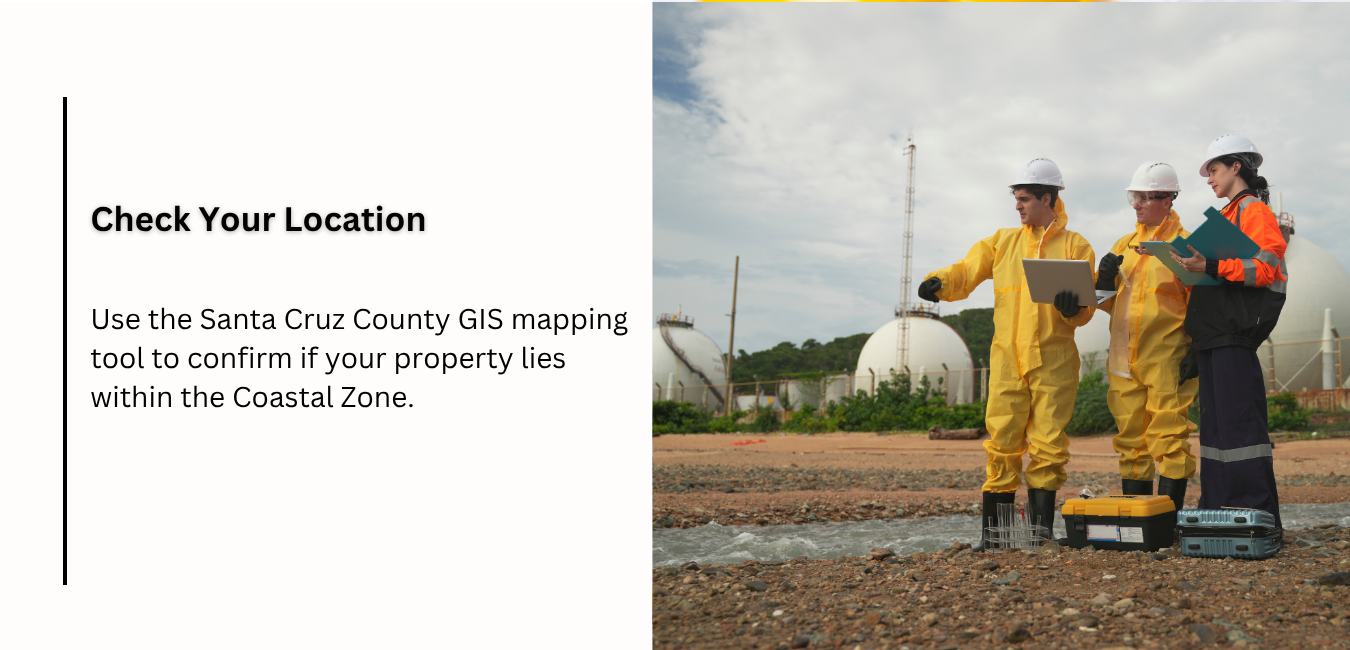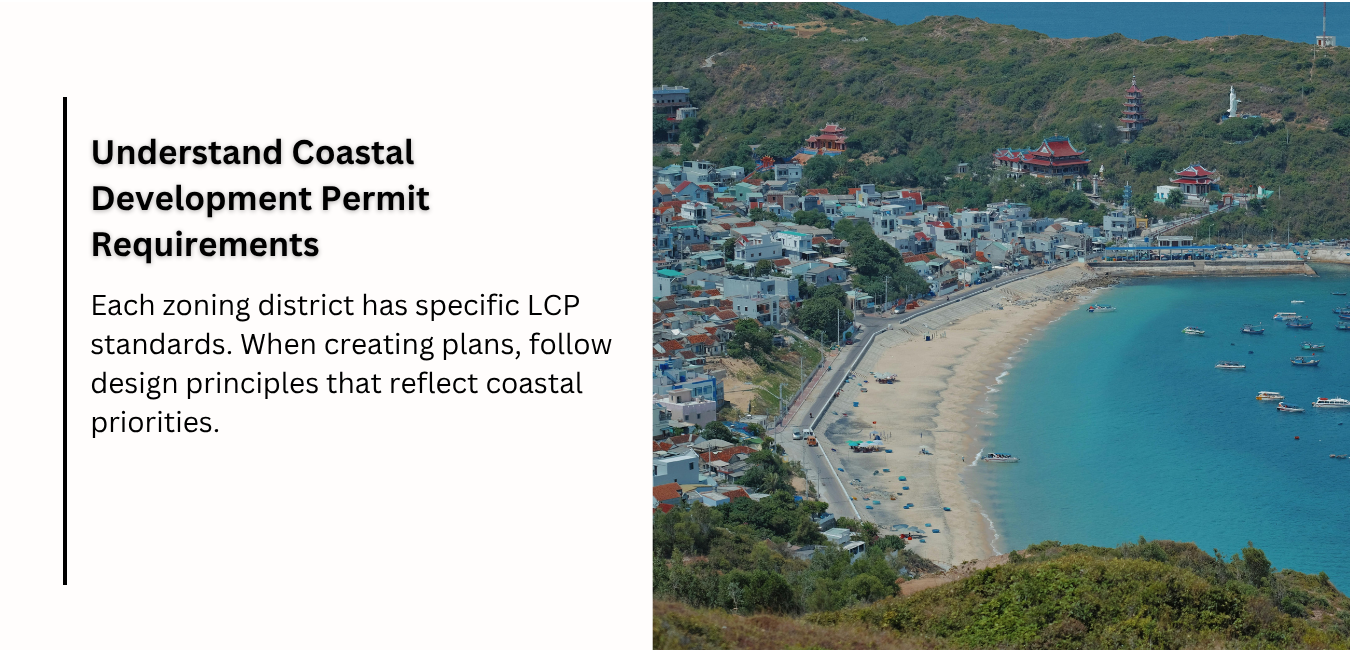Coastal Development Permits in Santa Cruz: What You Must Know Before Building a Home
Santa Cruz reflects California's coastal charm, attracting those who dream of creating a custom home surrounded by ocean views and natural beauty. Building in the Coastal Zone comes with unique challenges and responsibilities. Understanding the coastal development permit process is essential for keeping your project compliant with environmental and building standards. Teaming up with a skilled custom home builder who takes care of design, permits, and construction can truly help turn your coastal dream into reality.
Understanding Coastal Development Permits

Building near the coast requires balancing architectural goals with environmental protection. A coastal development permit (CDP) authorizes construction or land alteration within the Coastal Zone under the California Coastal Act. This law protects natural resources, scenic landscapes, and public access. The coastal development permit review process evaluates whether a project supports these goals while meeting zoning and design requirements.
When You Need a Coastal Development Permit
A coastal development permit applies to many types of projects:
- Major Home Projects: New home construction or large remodels that modify your property's footprint or structure require review to confirm compliance with coastal design standards. These projects often include evaluations of materials, scale, and the effect on nearby views and landscapes.
- Accessory Dwelling Units (ADUs): Adding an ADU or secondary living space often qualifies as coastal development. The process reviews how added housing affects access, density, and site use.
- Land Modification and Grading: Grading, excavation, or landscaping that reshapes terrain or alters drainage patterns can affect coastal stability and needs careful evaluation to protect sensitive landforms.
- Land Use and Density Changes: Projects that change how land is used, increase occupancy, or expand property development usually require permits. This includes subdividing land or converting open areas into residential or mixed-use spaces.
Even smaller projects may qualify as "development" under state law. Verify early whether your property lies within the Coastal Zone before planning construction.
Local Regulations and Agencies
The California Coastal Commission oversees coastal management at the state level, while the Santa Cruz County Planning Department applies these policies locally through the Local Coastal Program (LCP). This cooperation maintains a balance between new development, community values, and environmental preservation. Understanding how these agencies coordinate helps homeowners and builders obtain a coastal development permit efficiently.
Step-by-Step Guidance for a Smooth CDP Process
A well-structured plan helps you move through the coastal development permit review process effectively. Preparation, expert guidance, and open communication simplify the experience.
Step 1 – Check Your Location

Use the Santa Cruz County GIS mapping tool to confirm if your property lies within the Coastal Zone. If it does, you will need a coastal development permit before starting construction or major renovation.
Step 2 – Contact the Zoning Counter

Meet with the Santa Cruz County Zoning Counter to discuss your site's characteristics. Planners can help identify potential concerns, such as:
- Topography and Erosion Risks: Steep slopes or erosion-prone terrain can limit where you build and may require geotechnical studies or stabilization measures to comply with safety standards.
- Agricultural Buffer Zones: Properties near farmland must maintain adequate buffers to protect agricultural operations from residential impacts, influencing how structures are positioned on the site.
- Access and Existing Structures: Limited access or existing buildings can affect driveway alignment, construction logistics, and emergency service routes. Addressing these factors early prevents complications.
- Septic System Design: The placement and capacity of septic systems require review by Environmental Health to confirm functionality and separation from sensitive areas. Proper design protects both health and natural resources.
This step supports a design that avoids costly issues later in the coastal development permit review process.
Step 3 – Understand Coastal Development Permit Requirements

Each zoning district has specific LCP standards. When creating plans, follow design principles that reflect coastal priorities:
- Natural Topography Preservation: Preserve existing contours and limit grading to reduce erosion. Retaining the landscape's character helps maintain drainage integrity and visual balance.
- Vegetation and Tree Protection: Keep existing vegetation and tree cover wherever possible to stabilize soil and preserve wildlife habitat. This thoughtful integration connects the home with its surroundings.
- Sensitive Habitat Avoidance: Avoid ridgelines or areas with ecological value. Protecting these spaces safeguards natural beauty and contributes to neighborhood appeal.
The California Coastal Act defines "development" broadly, so even minor site adjustments can require a coastal development permit.
Step 4 – Address Environmental Health and Infrastructure

Environmental and infrastructure factors influence approval outcomes. Work closely with relevant departments on:
- Septic Systems: Verify system capacity with Environmental Health. Proper sizing prevents contamination and supports sustainable living.
- Utilities: Plan for underground lines to preserve coastal views and minimize visual impact.
- Stormwater Management: Apply Low Impact Development (LID) techniques to handle runoff effectively and protect water quality.
Step 5 – Plan for Other Permits

A coastal development permit often precedes additional approvals. Building, grading, and environmental permits may also be required. The Camino Online Permit Guide helps track the sequence of necessary applications.
Key Takeaway
Early collaboration with county staff reduces project risk and keeps your coastal development permit application on track.
Navigating the Coastal Development Permit Review Process

Submitting your coastal development permit application begins a detailed assessment that protects both the community and the environment. The coastal development permit review process examines how each proposal affects resources, views, and local character.
Steps in the Review Process
Typical stages include:
- Pre-application Consultation: County staff review project concepts for consistency with coastal rules and design standards.
- Formal Submission: Applicants submit finalized plans, technical reports, and environmental documentation.
- Public Review: Community members and agencies can provide feedback on potential impacts.
- Hearing and Decision: The Planning Commission or Coastal Commission reviews findings and issues a decision or conditions of approval.
Throughout the coastal development permit review process, organization and communication maintain steady progress.
Challenges and Solutions
Projects often face concerns about habitat protection, scenic views, or neighborhood compatibility. To handle these challenges effectively:
- Environmental Factors: Consult qualified professionals to address erosion control, wetland boundaries, or wildlife protection early.
- Design Considerations: Choose materials and architectural forms that complement the landscape and existing community character.
- Public Engagement: Maintain transparency with neighbors and local groups. Open communication builds trust and reduces objections during review.
A well-established custom home builder with regional experience can anticipate these challenges and guide your project through the process.
Why Working With a Custom Home Builder Matters

Coastal construction requires creativity, technical expertise, and regulatory knowledge. A custom home builder familiar with local permitting simplifies the coastal development permit process and protects your investment.
Expertise in Coastal Regulations
An experienced custom home builder interprets local building codes and identifies potential compliance issues before they escalate. Their knowledge of coastal development permit guidelines allows for smoother coordination with planning officials.
Coordinating Design, Permitting, and Construction
Effective coordination between design, permitting, and construction minimizes delays. A dedicated custom home builder manages agency communication and adjusts designs promptly during the coastal development permit review process.
Enhancing Value and Lifestyle
A luxury custom home builder blends environmental respect with thoughtful design. Homes are planned to highlight views, maintain privacy, and use quality materials that last. This attention to detail and setting enhances comfort and long-term value.
Tips for a Smooth Coastal Development Permit Experience

The coastal development permit review process can take time, but preparation and collaboration help maintain progress. These strategies simplify the path from concept to completion.
Start With a Feasibility Study
A feasibility study outlines site conditions, zoning restrictions, and environmental limitations. It supports realistic planning for a coastal development permit and helps anticipate potential challenges.
Engage Experts Early
Involve architects, engineers, and environmental consultants from the start. A custom home builder familiar with the coastal development permit review process coordinates their efforts, keeping your project aligned with regulatory and design goals.
Plan for Timelines
The coastal development permit process may take several months, depending on the project scope. Build flexibility into your schedule and account for:
- Public hearings
- Environmental assessments
- Design revisions
Strong scheduling keeps momentum and avoids unnecessary costs.
Prioritize Transparency and Communication
Clear communication among homeowners, agencies, and contractors supports cooperation and reduces misunderstandings. Early discussions with the Coastal Commission contribute to a smoother coastal development permit review process.
From Concept to Completion: Building Your Coastal Home With Element Homes

Element Homes specializes in designing and constructing high-end coastal residences in Santa Cruz. Our team is here to walk clients through every stage of the coastal development permit process, ensuring they achieve stunning architectural designs while adhering to all local regulations.
Our Process
- Get Your Estimate: We begin with a detailed site visit or virtual meeting to learn your goals and develop an accurate project estimate.
- Get Plans and Permits: Our architects and designers create plans that meet your design preferences while satisfying the coastal development permit review process standards.
- Build Your Dream Home: We oversee construction from start to finish, delivering quality craftsmanship and complete regulatory compliance.
By managing every stage from design through final inspection, Element Homes provides a straightforward, rewarding experience for coastal homeowners.
Conclusion
Understanding the coastal development permit process is essential for anyone planning to build in Santa Cruz. The coastal development permit review process preserves coastal landscapes while supporting responsible development. When you work with a knowledgeable custom home builder, you can steer clear of obstacles and see your architectural ideas come to fruition. With careful planning, professional insight, and steady communication, your coastal home can become both a personal retreat and a lasting part of Santa Cruz's shoreline.
Ready to start your coastal dream home? Contact Element Homes today to schedule your consultation and take the first step toward building your custom luxury residence in Santa Cruz.

Related POsts
The Rise of Micro Data Centers for AI Startups
AI startups in California are turning to micro data centers for faster builds and better GPU performance. Learn what goes into a strong design–build setup.
Read moreCoastal Development Permits in Santa Cruz: What You Must Know Before Building a Home
Planning to build a home in Santa Cruz’s coastal zone? Learn the key steps for obtaining coastal development permits, meeting regulations, and avoiding costly delays.
Read more

